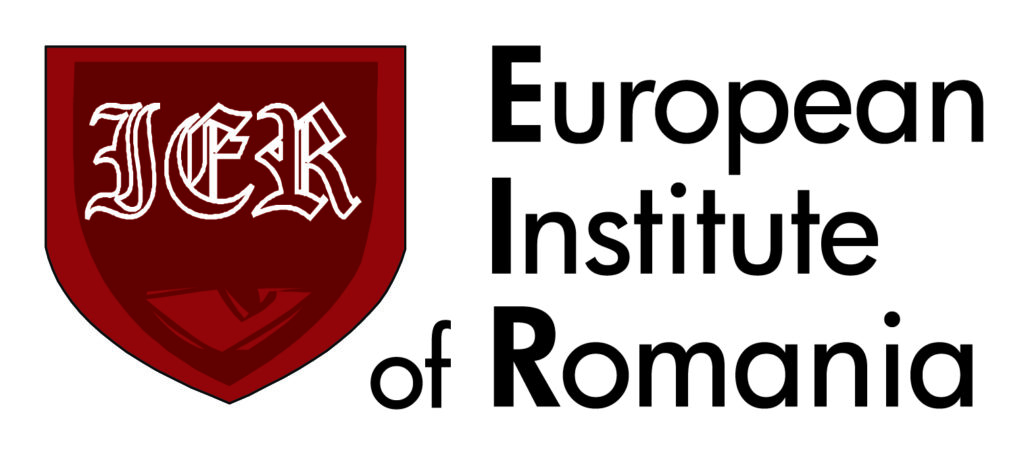Key points:
– For the past 40 years, the anti-terrorist coalition has not only operated in the framework of the military mission, but also a humanitarian and training mission, including educational projects, also with respect to the role of women and men in the armed forces of the Islamic Republic of Afghanistan;
– this “social loosening”, which came along with the NATO mission to push the Taliban away from power, allowed for the moving away from an orthodox interpretation of Islam, according to which only boys can be educated, but only in religious schools;
– some commentators say that the process of improving the situation of women’s rights built in 20 years has been dismantled in one night;
– since early July 2021, the Taliban have been ordering local leaders to provide lists of girls to marry them so that they generate new living forces for their army.
Purpose of the article
This article is not intended to review NATO’s US-led military activities and political military operation in the Islamic Republic of Afghanistan. Neither is it aimed to evaluate the anti-terrorist coalition’s withdrawal, nor to analyse the immediate establishment of a new entity under international law, named Islamic Emirate of Afghanistan, by the Taliban fundamentalist Islamic group. These issues have been addressed with valuable analysis presenting the problem from different perspectives and fields of studies. What is still missing is an analysis of the dramatic situation of women under the Taliban rule, which rightly outrages public opinion. Nevertheless, it is necessary to focus on facts to better grasp the factual and legal situation, what has changed for Afghan women and girls, and what they are yet to face[1].
Upon reading the reports of the largest international organisations, including governmental ones – first of all, the United Nations and NATO – as well as non-governmental ones – such as Amnesty International and Human Rights Watch – and analysing the current situation of the civilian population in Afghanistan, including the so-called vulnerable groups, this should be compared to what they have tried to achieve over the course of 20 years, since 2001, when the United States used the norm of the North Atlantic Pact, the famous Article 5, to form an anti-terrorist coalition. After all, those 20-years long activities were not only carried out as a part of a military mission, but also as humanitarian and training activities, including education initiatives, both addressed to the armed forces of the Islamic Republic of Afghanistan – both men and women soldiers – as well as to the civilian population. The central and local government sector has gained a lot in terms of know-how management through courses, trainings, and tutorials, but also in terms of attempts to form a democratised (term used deliberately instead of “democratic”, sic!) form of government. Without getting into a discussion about the legitimacy of the process of the entire conflict, one must do justice and show the enormity of the expenditures on international trainings[2], which were not only supposed to improve the comfort and security of Afghans’ life, but most of all, make a cultural change according to the Western model.
There is no escape from cultural heritage
In this way, one can get to the essence of the speculations on what tragedies we are starting to observe under the Taliban regime. Arab culture is one of the Eastern cultures. The attitude towards the role of people and of the individual in a society, first of all, is what makes the difference between Eastern and Western civilisation. In Western civilisation, the life of people is indeed at the first place in the hierarchy of values. Taking the life of a human being is punishable by the highest penalty, while enormous logistic and financial resources are involved to save at least one human life. As a matter of fact, putting the person at the centre of the decision-making process is the domain of the West. In Eastern civilisation – both Middle Eastern and Far Eastern – society and its well-being has always been of central importance. Hence, the role and position of the individual had to be hierarchically lower to support the development and prosperity of the society – the family, tribe, clan, island, or nation. This is also clearly expressed in philosophy and religion. It is enough to compare the Christian tenets of the free will of the individual to the beliefs of Buddhism, Hinduism, Taoism, and Confucianism.
The position of women in the Muslim religion, but also in the legal dictates of the Sharia law, is subordinated to the man. There is no mention of a democratic approach to equality, although, de jure, the Koran treats both genders as equal. However, the Sharia law shows a number of limitations in this regard. De facto, the situation of women and girls in Islam depends on the geographical region, the country’s level of wealth, and the traditions and historical achievement of a given community[3].
A worse situation for women and girls
The stage of education and the teaching content for Afghan women and children has radically changed over the last decades. This “social loosening”, which came along with the NATO mission to push the Taliban away from power, allowed for moving away from an orthodox interpretation of Islam, according to which only boys can be educated, but only in religious schools. That is why, according to the gender perspective applied in the international organisation based, indeed, on the cultural role of women (and of other groups particularly at risk), the ongoing changes can be most accurately visualised. As a matter of fact, the fall of the Taliban regime had allowed for some significant changes and progress in the field of women’s rights and education. Back in 1999, no girl was enrolled in high school, while only 9,000 girls were attending primary school. Already in 2003, as many as 2,4 million girls were attending school. This number is currently around 3,5 million, including as much as one third of public and private university students being women[4].
As humanitarian organisations, led by UNICEF[5], have been alerting for a long time, over 3,7 million Afghan children still do not attend school. More than half of them are girls, who are not sent to educational centres far away from their homes on purpose, due to, firstly, the dangers of the ongoing armed conflict and, secondly, their cultural role, where girls are imposed to help in the household (or farm).
Before the Taliban announced the re-establishment of the Islamic Emirate of Afghanistan, Afghan women proudly participated in public life, holding political offices and pursuing business opportunities to a lesser – but still significant – extent. Over a thousand Afghan women set up a business by 2019, which is a huge civilisational leap, as previously this number was zero due to the Taliban prohibitions imposed[6].
Finally, according to the statistics of the World Bank and the UN, 27% of MPs were women, 20% of women worked as clerks in both central government and local administration, but also in the armed forces, police, or housekeeping services[7]. This was related to an amendment to the constitution. The constitution was changed so that women could legally occupy at least 27% of seats in the lower parliament chamber[8]. Under the Taliban, such a big (652,230 km2) and populated (37,5 million people)[9] country collapsed in terms of economy, civilisation, as well as infrastructure. It is hard to imagine living without the internet or mobile phones, while these two benefits of technological progress were inaccessible to the average Afghan. Just earlier this year, approximately 11% of Afghans had access to the internet[10] and over 60% owned a mobile phone, although it still is a significant change brought about by the intervention of the armed forces from the anti-terrorist coalition. However, according to UN statistics, frequent outages of mobile services seriously affect communication, including mutual warning and information on threats sharing[11].
Lastly, the Muslim women’s full-body cover, the burka, which was imposed during the Taliban rule, was abolished during the “thaw” period, and thus after the Taliban were removed from power by the troops of the anti-terrorist coalition. Indeed, some commentators talk about the wasting, in just one night, of the process of improving the situation of women’s rights built over 20 years. Under the rule of the terrorists, who had taken control of Afghanistan in 1996, enforcing strict rules according to their own strict interpretation of Islamic law, women had to cover themselves (not only their face!) and only leave the house in the company of a male relative. The Taliban also forbade girls from going to school and women from working outside the house. They were also forbidden to vote. Additionally, it is not often mentioned for political correctness that women were subject to cruel punishments for non-compliance with the rules imposed on the society, including beating, different forms of torture, and stoning if found guilty of adultery (on whose definition a separate article should be written, because a mere sexual act with a person other than your spouse opens up a list of crimes where even a “lustful” gaze can be recognised as worthy of stoning) by a court made by men on the basis of witness testimonies, also all men. Afghanistan was then the country with the highest women (including young mothers) mortality rate in the world[12].
Back to the Taliban regime
On 15th August, 2021, the Taliban announced the re-establishment of the Islamic Emirate of Afghanistan, a nomen omen yet not de jure recognised by any state, although this situation will certainly change due to political reasons, as it happened during the annexation of Ukrainian Crimea by the Russian Federation.
Everything that has been achieved in the field of women’s rights as briefly mentioned above, is most certainly a thing of the past. It is extremely naive to have faith in the terrorists’ insurance that the fate of women in Afghanistan will not change[13]. As a matter of fact, it is possible to find on the internet interview videos of Taliban representatives, as well as of their fighters (within the framework of international humanitarian law in armed conflict, a terrorist group as a thus non-state party to an armed conflict does not have “armed forces” composed, inter alia, of “soldiers”), who refer to the Koran for what concerns women’s education and position in the society. This goes so far that, as it was already mentioned in this article, the Taliban interpretation – or rather their orthodox worldview – has nothing to do with Islam professed in other countries, for example in Poland by the Tatars.
Afghan terrorists exacerbated the violence, encouraged by the lack of resistance of the Afghan armed forces and police, and by the minimal, not to say zero, international pressure, including the UN Secretary General Antonio Guterres’ appeal to the Taliban to immediately halt their offensive. For Afghan women, their growing power heralds the return to the past, as well as a bloody revenge for the years of “freedom”. Since early July 2021, the Taliban have been ordering local religious leaders to provide lists of girls (over 15 years of age) and widows (under 45). The goal is to get them married so that they can generate the living force of their army. This sounds unbelievable from the point of view of a reader raised in the Western culture. Nevertheless, one should take into account the Eastern axiological system, that puts the society, and not the individual, first. Another issue is the over-interpretation of Islam by the regime – for its own needs – including exploiting the loopholes of the Sharia law. Hence, this evokes a frightening picture of acceptance of the exploitation of human beings, their dignity, and fundamental freedoms for the purposes of the non-state entity.
After such forced marriages, women and girls will be subjected to re-education and conversion to the “authentic Islam” promoted by the terrorists. The situation recalls the tragedy of women and girls who have been kidnapped, raped, and indoctrinated by the fundamentalist Islam Boko Haram group from North-eastern Nigeria. This prospect not only has caused deep fear among the Afghan population, but it has also forced women and their families to flee, thereby producing hundreds of thousands of Afghan migrants, contributing to a humanitarian disaster.
Therefore, it is not surprising that Afghan women and their families are destroying all evidence of their lives “on the Western model”, such as school licences, certificates, and training materials from courses and other forms of education, as well as proofs of participation in political life, voting and conducting electoral campaigns[14]. This is, indeed, the only way to save their own life and health and their loved ones’ before the bloody revenge of the Taliban. The past 20 years’ achievements of the Afghan women, supported by the West, especially in the field of education, employment, and political participation, are disappearing as if with the consent of the West. Offering “wives” is an inhuman and unlawful war strategy aimed at luring fighters to join the Taliban troops. This is sexual slavery, and not marriage, also according to Islam. Forcing women into sexual slavery under the guise of marriage is also a war crime and a crime against humanity. Article 27 of the Geneva Convention on the protection of civilians during a war states that “Women shall be especially protected against any attack on their honour, in particular against rape, enforced prostitution, or any form of indecent assault”[15].
Summary
The situation of women and girls in Afghanistan has dramatically changed over the past decades. During the 20-years mission, a lot has been achieved in the field of protection of women’s rights, including their participation in public life and greater freedom in private life, access to education, and job market, including in the armed and law enforcement forces. However, with the advent of the Islamic Emirate of Afghanistan, a return to the Taliban’s terrorist methods becomes reality. The right to passive and active voting and to education has unquestionably been taken from Afghan women, and kidnapping, torture of political opponents, sexual slavery, and other crimes violating fundamental human rights are beginning to be noted with the tacit agreement of the watching West.
[1] The author is an international lawyer, deals with military law, and obtained NATO certificates, including on gender perspective in armed conflicts and human trafficking and exploitation during the war for criminal purposes.
[2] See, for example, the post by Business Insider, The US spent $760 million on education in Afghanistan — and no one’s sure if it helped: https://www.businessinsider.com/the-us-spent-760-million-on-education-in-afghanistan-andno-ones-sure-if-it-helped-2016-4?IR=T and US AID, Afghanistan; Education: https://www.usaid.gov/afghanistan/education (accessed: 19.08.2021).
[3] Cf. V. Herasymenko, Prawa kobiet w cywilizacji zachodniej i cywilizacji islamskiej, w: Kobiety w przestrzeni społeczno-politycznej, wybrane zagadnienia, M. Kumelska, W.T. Modzelewski, P. Schmidt (ed.), INP UWM, Olsztyn 2017; K. Sadowa, Sytuacja kobiet w islamie, „Acta Erasmiana” 2013/5; M. Sadzewicz, Prawo międzynarodowe a prawo kobiet w islamie, „RSAWL” 2018/2.
[4] BBC News, In numbers: How has life changed in Afghanistan in 20 years?: https://www.bbc.com/news/world-asia-57767067 (accessed: 19.08.2021).
[5] UNICEF, The situation of children and women in Afghanistan: https://www.unicef.org/afghanistan/situationchildren-and-women-afghanistan (accessed: 19.08.2021).
[6] Just Security, With No Choice but to Continue, Women’s Entrepreneurship Presses Ahead in Afghanistan (13.07.2021): https://www.justsecurity.org/77406/with-no-choice-but-to-continue-womens-entrepreneurshippresses-ahead-in-afghanistan/; The Borgen Project, Creating female entrepreneurs in Afghanistan (4.02.2021): https://borgenproject.org/female-entrepreneurs-in-afghanistan/; The World Bank, Helping Afghan Women Improve their Economic Status: https://www.worldbank.org/en/news/feature/2017/10/03/village-womenbenefit-from-programs-to-improve-their-economic-and-social-status (accessed: 19.08.2021).
[7] BBC News, op. cit.
[8] Aljazeera, ‘It is time’: Afghanistan’s female candidates promise change: https://www.aljazeera.com/news/2018/10/19/it-is-time-afghanistans-female-candidates-promise-change; J.R. Allen and V. Felbab-Brown, The fate of women’s rights in Afghanistan: https://www.brookings.edu/essay/thefate-of-womens-rights-in-afghanistan; The Asahi Shimbun, TOWARDS EQUALITY: How Afghan women conquer 27% share in parliament after decades of war: https://www.asahi.com/ajw/articles/14377179 (accessed: 19.08.2021).
[9] CIA, World Fact Book, Afghanistan: https://www.cia.gov/the-world-factbook/countries/afghanistan/#peopleand-society (accessed: 19.08.2021).
[10] World Bank, Individuals using the Internet: Afghanistan, https://data.worldbank.org/indicator/IT.NET.USER.ZS?locations=AF (dostęp 19.08.2021).
[11] United Nations Development Programme, Evaluation of UNDP Assistance to conflict-affected countries: Study Case Afghanistan, New York 2006.
[12] The Conversation, As the Taliban returns, 20 years of progress for women looks set to disappear overnight: https://theconversation.com/as-the-taliban-returns-20-years-of-progress-for-women-looks-set-to-disappearovernight-165012 (accessed: 19.08.2021).
[13] Human Rights Watch: Should Anyone Believe Taliban Pledges to Respect Women’s Rights?: https://www.hrw.org/news/2021/08/19/should-anyone-believe-taliban-pledges-respect-womens-rights (accessed: 19.08.2021).
[14] The Guardian, An Afghan woman in Kabul: ‘Now I have to burn everything I achieved’: https://www.theguardian.com/world/2021/aug/15/an-afghan-woman-in-kabul-now-i-have-to-burn-everything-iachieved (accessed: 19.08.2021).
[15] Geneva Convention on the protection of civilians during was, 12th August 1949, Journal of Laws from 1956, No. 38, heading 171.

IF YOU VALUE THE INSTITUTE OF NEW EUROPE’S WORK, BECOME ONE OF ITS DONORS!
Funds received will allow us to finance further publications.
You can contribute by making donations to INE’s bank account:
95 2530 0008 2090 1053 7214 0001
with the following payment title: „darowizna na cele statutowe”

































Comments are closed.